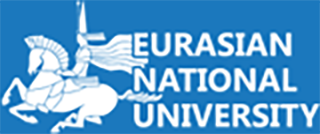Abstract
The results of seasonal Al and Mn activity on the surface of the atmosphere above the city of Nur-Sultan are shown from October 2016 to January 2017. The technique of sampling aerosols in various fractions and further analysis of the data are described. Together with scientists from the University of Hiroshima (Hiroshima, Japan) and the University of Tsukuba (Tsukuba, Japan), the composition of aerosols in the air of Astana was monitored. The aim of the project was to develop a methodology for sampling aerosols in various fractions and conduct measurements on an ongoing basis. The studies were carried out using a high-volume air sampler and a cascade of impactors that measure the size distribution and the respirable mass fraction of airborne particles of the environment. Fiberglass filters, which are a commonly used material for sample collection, were also used. The data obtained in the study of aerosol samples using a cascade of impactors allowing the selection of aerosols with sizes up to 0.49 µm showed the content of aluminum isotope in the atmosphere of the city. The smaller the clearance gap, the more particles are trapped. On average, aerosols were taken from more than 200 thousand cubic meters of air.
Article Type
Original Study
First Page
29
Last Page
37
Creative Commons License

This work is licensed under a Creative Commons Attribution 4.0 International License.
Recommended Citation
Zhumalina, A. G.; Sambayev, E. K.; Sakaguchi, A.; Endo, S.; Tanaka, K.; Kajimoto, T.; Kawano, N.; Suleimenov, T. B.; Zhumadilov, K. Sh.; and Hoshi, M.
(2020)
"Comparison of aluminum and manganum concentration in Akmola region, Kazakhstan,"
Eurasian Journal of Physics and Functional Materials: Vol. 4:
No.
1, Article 4.
DOI: https://doi.org/10.29317/ejpfm.2020040104

